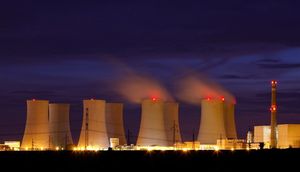December arabica coffee (KCZ25) today is up +4.30 (+1.05%), and January ICE robusta coffee (RMF26) is down -58 (-1.25%).
Coffee prices are mixed today. Coffee prices have support today on signs of tighter global supplies after the International Coffee Organization (ICO) reported that global coffee exports for the current marketing year (Oct-Sep) fell -0.3% y/y to 138.658 million bags.
Arabica coffee also has support from strength in the Brazilian real (^USDBRL), which climbed to a 5-week high today against the dollar, discouraging export sales from Brazil's coffee producers.
Robusta coffee is under pressure today after initial assessments showed no meaningful damage to Vietnam's coffee-producing region from Typhoon Kalmaegi, which made landfall last week in Vietnam.
Shrinking ICE coffee inventories are supportive for prices. The 50% tariffs imposed on US imports from Brazil have led to a sharp drawdown in ICE coffee inventories. ICE-monitored arabica inventories fell to a 1.75-year low of 417,478 bags last Friday, and ICE robusta coffee inventories fell to a 3.75-month low of 5,873 lots today. American buyers are voiding new contracts for Brazilian coffee purchases due to the 50% tariffs on US imports from Brazil, thereby tightening US supplies, as about a third of America's unroasted coffee comes from Brazil.
Ample rain in Brazil eases dryness concerns and is negative for coffee prices. Somar Meteorologia reported today that Brazil's largest arabica coffee-growing area, Minas Gerais, received 72.1 mm of rain during the week ended November 7, or 160% of the historical average.
Coffee prices garnered support after the National Oceanic and Atmospheric Administration (NOAA) on September 16 increased the likelihood to 71% of a La Niña weather system in the southern hemisphere from October to December, which could bring excessive dry weather to Brazil and harm the 2026/27 coffee crop. Brazil is the world's largest producer of arabica coffee.
Increased Vietnamese coffee supplies are bearish for prices. The Vietnam National Statistics Office reported last Thursday that Vietnam's Jan-Oct 2025 coffee exports rose +13.4% y/y to 1.31 MMT. Also, Vietnam's 2025/26 coffee production is projected to climb +6% y/y to 1.76 MMT, or 29.4 million bags, a 4-year high. In addition, the Vietnam Coffee and Cocoa Association (Vicofa) said on October 24 that Vietnam's coffee output in 2025/26 will be 10% higher than the previous crop year if weather conditions remain favorable. Vietnam is the world's largest producer of robusta coffee.
Coffee prices found support after Conab, Brazil's crop forecasting agency, cut its Brazil 2025 arabica coffee crop estimate on September 4 by -4.9% to 35.2 million bags from a May forecast of 37.0 million bags. Conab also reduced its total Brazil 2025 coffee production estimate by 0.9% to 55.2 million bags, from a May estimate of 55.7 million bags.
The USDA's Foreign Agriculture Service (FAS) projected on June 25 that world coffee production in 2025/26 will increase by +2.5% y/y to a record 178.68 million bags, with a -1.7% decrease in arabica production to 97.022 million bags and a +7.9% increase in robusta production to 81.658 million bags. FAS forecasted that Brazil's 2025/26 coffee production will increase by +0.5% y/y to 65 million bags and that Vietnam's 2025/26 coffee output will rise by 6.9% y/y to a 4-year high of 31 million bags. FAS forecasts that 2025/26 ending stocks will climb by +4.9% to 22.819 million bags from 21.752 million bags in 2024/25.
On the date of publication, Rich Asplund did not have (either directly or indirectly) positions in any of the securities mentioned in this article. All information and data in this article is solely for informational purposes. For more information please view the Barchart Disclosure Policy here.
More news from Barchart






